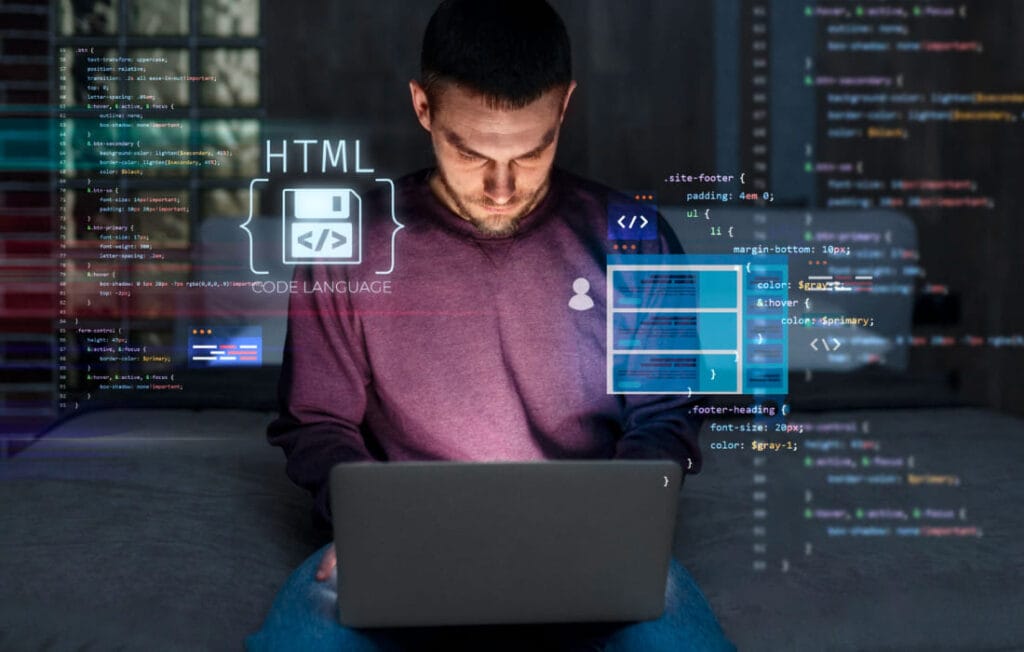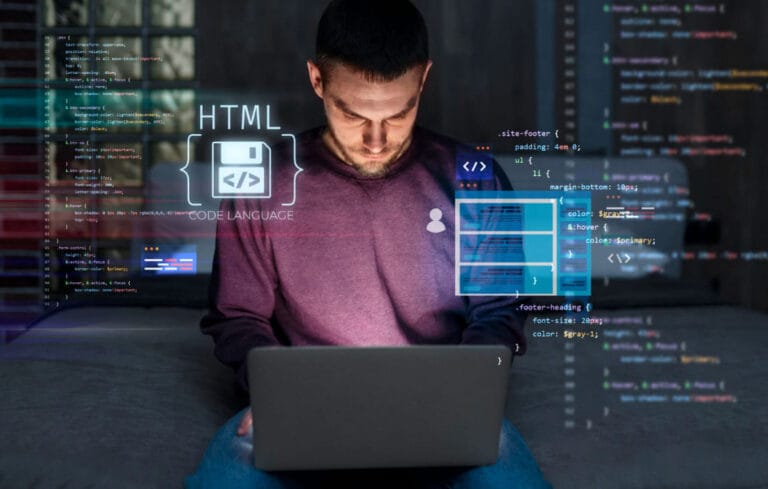People often ask me and my colleagues, “Is cybersecurity hard?” The answer depends on your preparedness, conscientiousness, and real engagement. Regarding remote workers, one advantage is that cybersecurity doesn’t require complex technical knowledge. Instead, it focuses on following rules and guidelines. In hybrid environments, best practices become even more important. It’s about doing a few things well, feeling secure, and overseeing policies that staff can follow.
Be providing security tools alongside convenience, then building policy and training for all staff. Then determine which tools are best for your staff.
Threats are evolving faster than ever, from phishing schemes to ransomware attacks. As a result, remote workers face huge risks without proper protection. Therefore, developing clear security strategies is essential. Organizations must also strengthen cyber hygiene policies. In addition, working with trusted partners is mandatory to protect remote teams.
In the article that follows, we will examine breaches in the banking sector. Specifically, we will explore lessons about cyber hygiene and expert support from service providers. Moreover, we will highlight the importance of employee training through certifications, including Google’s cybersecurity program. The issue of cybersecurity images as awareness campaigns. Ultimately, we want to help to understand the best practices to engage in cybersecurity as a resilient remote employee.
Lessons from Cybersecurity Breaches in Banking
The financial industry has long been a frequent target of cybercriminals. In fact, high-profile banking breaches show how damaging attacks can be. Therefore, without strong defenses, cybersecurity incidents may have catastrophic effects. An example of this includes hackers exploit vulnerabilities in remote access systems that allow them to steal sensitive customer data. Ultimately, incidents like this show the importance of authentication and encryption procedures. Consumers, organizations, and employees must adopt them.
The same principles apply to remote work environments. Just as you secure internal systems with layered defense, remote environments require vigilance. Therefore, organizations must enforce strong password policies and firewall protections. In addition, logging user activity helps maintain security. Cybercriminals frequently target organizations through phishing scams. This is especially true in the financial industry.
Overall, the financial industry can help educate companies about breaches in relation to the importance of response strategies. Cybersecurity professionals remind us that after a breach, detection and quick response matter most. In remote environments, organizations must follow models used by financial companies. Therefore, they should install monitoring and auditing tools to detect vulnerabilities. These tools help protect businesses, clients, and customers. Without auditing, organizations may lose track of data access and repair responsibilities.
If organizations learn from banking sector errors, they can reduce future costs. Moreover, they can implement stronger practices before issues occur. These practices, when applied to remote work, ensure safer and more resilient environments.
Strengthening Remote Work Through Experts and Providers
When it comes to remote security, it requires more than tools it also requires expertise. When utilizing cyber security experts, it will make designing strong distancing strategies, employee education and identification of undiscovered risks, simple. The professional can analyze your remote working arrangement and confirm it follows industry standards for compliance.
For many smaller organizations, outsourcing these functions may be easier than attempting to implement them themselves. A trusted cybersecurity provider offers comprehensive services like detection, threat intelligence, and monitoring. With their support, you gain constant protection without building costly in-house infrastructure. Therefore, a trusted partner keeps you one step ahead of cybercriminals.
In addition, collaborating with remote teams across video conferencing, cloud storage, or other platforms requires constant attention. To address this, providers and experts ensure that employees use trusted and uninterrupted channels. Moreover, professionals also train employees to recognize suspicious activities before they cause damage.
Now that the threat landscape is changing constantly, organizations cannot afford to use yesterday’s methods. Using experts and service providers gives remote workers protection found on par with offices and makes accepting the best cyber protections easy, supporting you and everyone else using remote work arrangements. Together, using their industry expertise and experience with them you can create the basis for your remote operational practices with cybersecurity in mind.
Training & Career Paths in Cybersecurity
A well-informed workforce is a fundamental element of a secure remote work strategy. Training employees in cybersecurity awareness greatly reduces risks. Certifications like the Google cybersecurity cert offer structured programs that teach the fundamental skills needed in the workplace, from identifying phishing emails to safely handling information. Encouraging staff to take the leap into a certification course will benefit an organisation’s resilience.
However, with the rapidly expanding market for entry level cybersecurity jobs, there are also welcoming opportunities for newcomers to enter the workforce. Many of the roles still need physical presence for working for cyber incident monitoring systems, monitoring the threat that they face, and ultimately supporting and securing their remote work specific infrastructure. From a company perspective, these roles present the opportunity to find and onboard new hires who possess the skills to manage risks and threats.
Even employees, both technical and non-technical, who are working remotely will need ongoing training, and it should happen regularly. Regular simulated security drills and awareness sessions keep individuals alert and vigilant. For businesses that see the value in learning, they must also show they are embracing best practices within cybersecurity.
By focusing on formal certifications, considering new jobs, and investing in training for existing employees, organisations are now adding additional layers of security to their systems and helping equip their community to be greater advocates in the fight against cybercrime.
Raising Awareness with Cybersecurity Images & Visual Guides
Using visuals to support cyber security culture in remote teams is a great way to get the job done. A well placed cyber security image will enhance training programs, awareness campaigns and digital handbooks. Visuals engage and make information more memorable. Companies can share infographic guides on detecting phishing emails, safe browsing, and password management with employees through all relevant communication channels.
Employees are pre-occupied with working from home with many other tensions and stresses. It is a less than ideal way to deliver policy/handbook updates when visuals on cyber security easily alleviate some of this “information overload.” The presenting key ideas in visual guides to allow for quicker understanding is informed by transitional learning and cognition. For instance, if your organization has decided for all employees to activate multi-factor authentication and you provide a graphic showing the easy steps, you will very likely see far greater adoption than long policy documents are showcasing.
It is wise for organizations to spend the money on metropolitan designed cyber security images to promote accuracy and professionalism. Quality images can be used for your blogs and internal communication platforms, as well as learning portals, but do not be afraid to re-use these for the purpose of repetition when trying to reinforce messaging. Using visually recognized assets with content decorated with necessary visuals will create greater awareness, and offer the best chance of good practice in cyber security practices to work across remote teams.
Cyber Security or Cybersecurity – Does It Matter?
One common question I encounter in the field is whether to write it as cyber security or cybersecurity. Although both words are used interchangeably throughout the industry, experts prefer “cybersecurity” as the standard term. When it comes right down to it, regardless of terminology, the most important thing is consistently applying strong security measures as it pertains to the practice.
In augmented work environments, employees must realize that while we may use different terms interchangeably, the principles remain the same. Whether we say cyber security or cybersecurity, the important part is to focus on the essential principals – protect sensitive data, secure devices, and restrict unauthorized access to confidential information.
Consistency in applying our terms in documents will also assist employees in identifying our official resources, policies and training materials.
Organizations should identify their preferred term in their internal training documents and awareness campaigns so that the names and terminology remain clear, which helps prevent team confusion.
In closing, the debate over spelling, while it may have minor significance, the real goal is to follow the best practices in cyber security, in order to protect your organization from the growing threat of cyber criminals taking advantage of remote operations!
Best Practices in Cybersecurity for Remote Teams
Organizations need to be proactive in the remote work environment to ensure that it remains safe. Though it was an experiment at the beginning of the pandemic, remote work has become the reality. The following best practices related to cybersecurity will help organizations maintain resiliency against changing threats:
Get secure access to company networks. Employees should only access the company network via a Virtual Private Network (VPN). Public Wi-Fi should never be used to access the company network.
Implement multi-factor authentication (MFA). MFA requires multiple layers of access for an attacker that all need to be leveraged to get access to a corporate network. If credentials were obtained by an attacker, MFA could allow the attacker to be prevented from accessing the network even with credentials, limiting unauthorized access.
Perform application patching and updates. Patching applications and software regularly limits the period of time attackers may have to exploit a vulnerability, and work to create more resilience against hackers.
Continuous training for employees. And ongoing (more frequent) awareness campaigns – helpful for remote workers to keep their attention tuned to social engineering and phishing attacks.
Incorporate endpoint protection. Each endpoint connecting to the company network should be equipped with antivirus, encryption, and monitoring.
When these best practices are implemented together, the company will have strong cybersecurity practices in place. If financial organizations and industrial organizations can secure their work environments using these principles, then so too can remote teams. Committing to these processes is appropriate to reduce risk and create trust with clients and partners.
These five components represent the pillars of best practices in cybersecurity that will provide the framework to ensure distributed teams can remain secure, while being productive in a digital-first working environment.
Summary – Creating a Culture of Cybersecurity in Remote Work
Securing remote work can often require more than having the right technologies in place, it requires having the right culture. We can learn from cybersecurity breaches in the banking sector here. If we make the effort to invest in cybersecurity experts within our business, take advantage of communication platforms to promote training tools i.e., Google cybersecurity cert being featured in communication channels, and in recent times, have cybersecurity images instead of just advertising images will all assist to bolster our defenses.
Successful businesses have dedicated time and attention to employee training, brought in expert help, and continually enforce policies surrounding remote work. Cyber threats will always be emerging, so businesses will have to stay ahead of the game if they hope to be able to embed the best practices in cybersecurity within the fabric of their business.
We think it is important to create awareness, engage the expertise, and implement innovative solutions to deliver safe and productive remote work environments. The time to create a cybersecurity culture is now!








